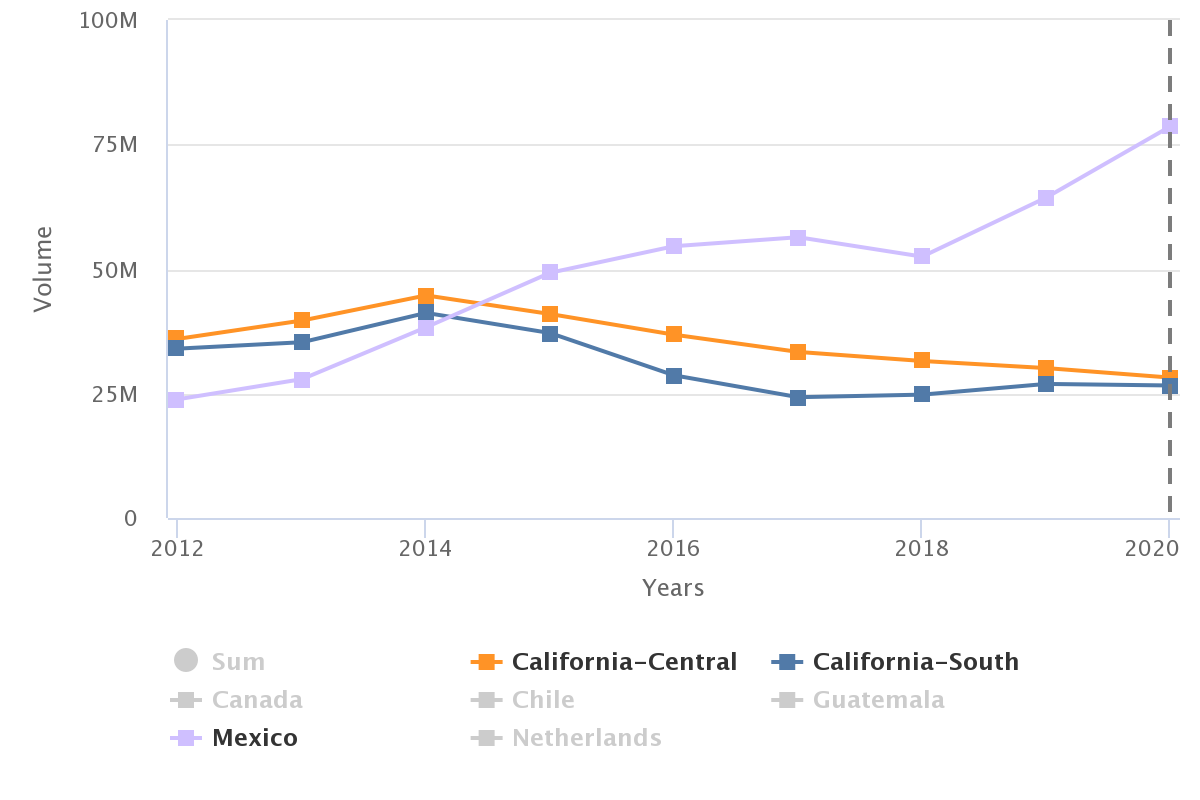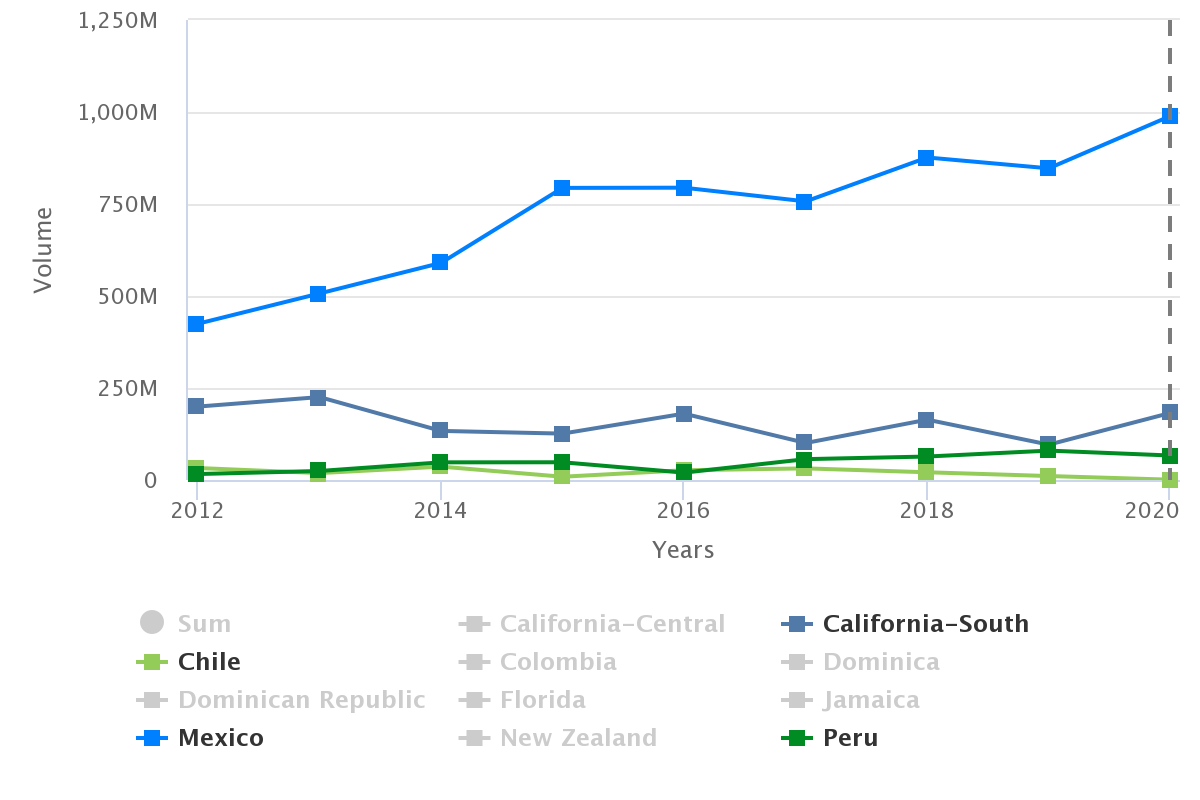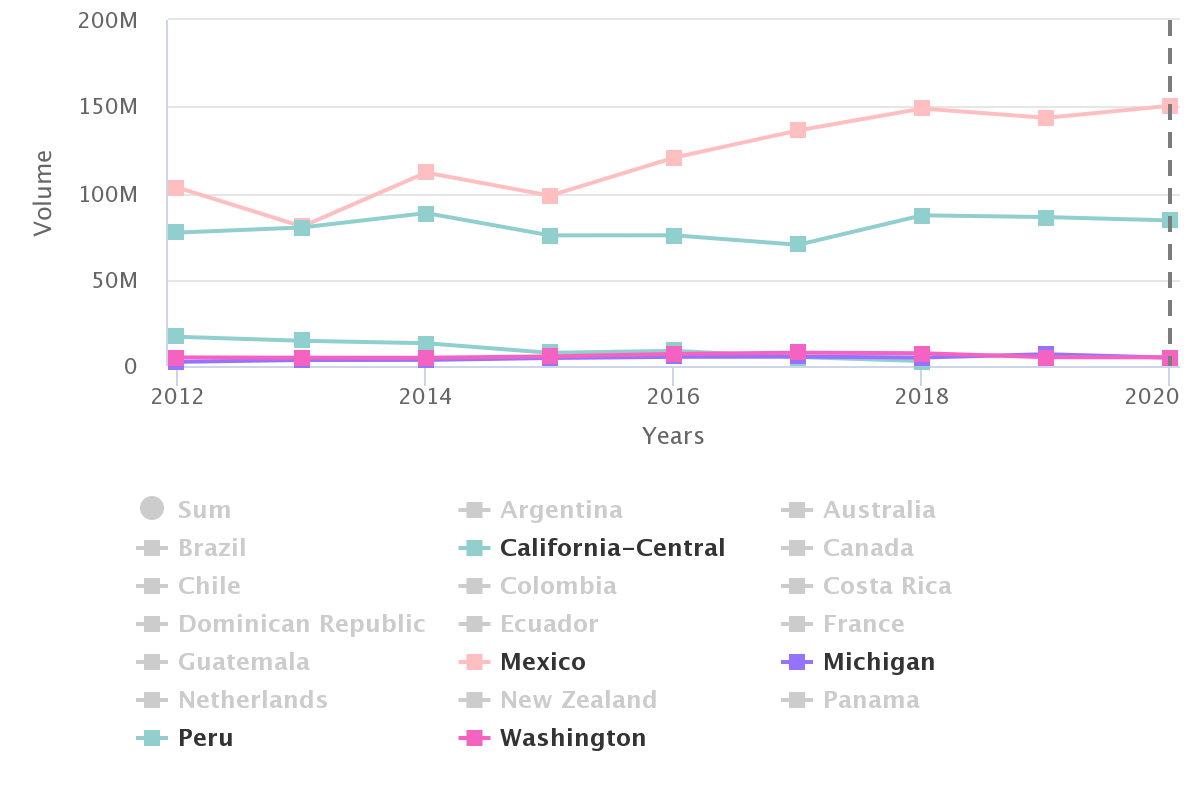So Much For Eating Local

Overview of the fruit imports in the US, complemented by charts from Agronometrics. Original published on October 15, 2021.
In 2019, the US imported more than 40 percent of its fresh fruit. (Photography by Tada Images, Shutterstock.)
The US is importing more fruits and vegetables than ever, as a shortage of farm and agricultural workers persists, according to a report from the New American Economy (NAE).
While the market for fresh fruits and vegetables has increased over the past 30 years, it seems American consumers are increasingly seeing produce from outside of the country on shelves. In 2019, the US imported more than 40 percent of its fresh fruit—a huge jump from 2001, when the country brought in only 20 percent of all fruit. The report found that, in addition to bananas, which have historically always come from outside of the country, fruits such as raspberries, avocados and pineapples are now mainly imported from other countries.
Source: USDA Market News via Agronometrics.
(Agronometrics users can view this chart with live updates here)
Source: USDA Market News via Agronometrics.
(Agronometrics users can view this chart with live updates here)
Fresh veggies don’t fare any better, with the US importing 16 billion pounds of vegetables in 2019, including 99 percent of all asparagus you see in produce departments.
Source: USDA Market News via Agronometrics.
(Agronometrics users can view this chart with live updates here)
This increased reliance on imported fruits and vegetables impacts growers, workers and farmland. In the past two decades, land dedicated to growing produce has decreased by more than six percent, with the largest drop coming from groves of citrus fruit.
Why is the US continuing to bring in more produce rather than grow production in our own backyard? The report posits a few theories.
First, there are fewer self-employed and family farmers working today than there were in the mid-20th century. The rate of hired agricultural workers and farm hands has also dropped, and workers are, on average, getting older. In 2019, less than 20 percent of farm workers were under 25, and nearly half of workers were 45 years old or older. This suggests that as farm hands and agricultural workers age out of the industry, they aren’t being replaced by younger workers. Fewer workers means less picking and harvesting, with less produce making it to the shelves.
The NAE also notes that labor costs on fruit and vegetable farms are higher than the average farm, which only contributes to the staffing shortages. Labor makes up about a third of the cost on fruit farms and nearly a quarter of costs on vegetable farms. With the labor force aging and fewer young people joining the workforce, economists at the NAE expect labor costs to continue to rise to attract new people.
Year after year, the demand for labor continues to grow. Since
2010, the number of H2-A visas that the US has issued has nearly tripled, to more than 280,000 visas in 2020. Those visas allow temporary foreign workers to come to America for up to 10 months and work for an agricultural employer. Farms rely on seasonal labor to help during planting and harvesting, and year after year, that demand has grown. The NAE found that the majority of H2-A visa applications specified that workers would handle apples, blueberries and strawberries—all fruits that require a specific skill set and gentle handling during harvesting. Increasing the number of temporary visas and focusing on creating a consistent workforce would pay dividends for these farmers.
While imported fruits and vegetables offer benefits for consumers—such as increased variety of produce available all year round and competition keeping prices stable—it can be difficult for smaller farms to compete with the amount of produce brought into the country every year. The NAE report doesn’t suggest what consumers or producers should do about that, but it seems clear that the next decade will be a tipping point for the sector. Will Americans refocus on local produce and eating seasonally or will global availability and resources win out?
The News in Charts is a collection of stories from the industry complemented by charts from Agronometrics to help better tell their story.
Access the original article with this (Link)









